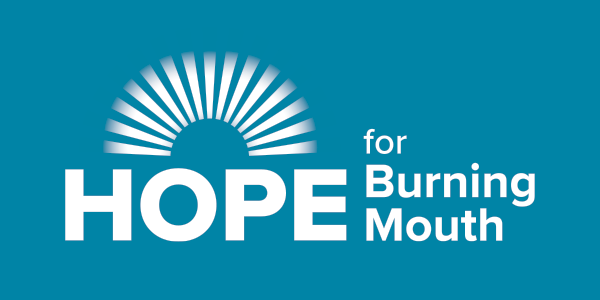Eating for Energy: Getting Off of the Blood Sugar Rollercoaster
Eating for Energy by regulating blood sugar.
Our bodies need fuel. We use both carbohydrates like bread and pasta and fats like butter and olive oil for fuel. However, the way we get these fuels makes the difference between energy and fatigue, between health and disease.
One of the biggest energy drains is the blood sugar rollercoaster. You can eat for energy by addressing your blood sugar regulation.
Primitive people ate complex carbohydrates, proteins, and fats. They ate intermittently, storing energy, to have it available when they needed it. With the change to an agricultural and then an industrial society, calorie dense foods like bread, sugar, and pasta are available all the time. Modern people get much of their nutrition from eating sugar and other refined carbohydrates.
What happens when you eat a typical Standard American Diet breakfast of coffee, sugar, milk, and a muffin? You have a rapid rise in your blood sugar levels a half hour later and then a crash 1-2 hours later. This makes you feel hungry and tired, so what typically happens? You grab a snack. Someone in your office has generously brought cookies to share. You have a cookie and coffee and you are off on another blood sugar rollercoaster. As holistic doctors, Dr. Sklar and her team guide you on alternative ways to eat.
Eating for Energy helps avoid health risks.
The Standard American Diet (SAD)[1] is made up of high amounts of carbohydrates. Carbohydrates are damaging to your body and brain in several ways. Excess sugar in the bloodstream damages protein structures. The high insulin that comes from eating carbs interferes with essential hormones such as melatonin and growth hormone, two of our healing and repair hormones.
High blood sugar is a health risk. High fasting blood sugar is risk for heart attack and stroke. Specifically, if you have a fasting blood sugar of over 75 mg/dl, you are at risk. For each one mg/dl increase in fasting blood sugar the risk for heart attack increases by one percent.[2]
So, if you have high blood sugar, you will benefit from a lower-carbohydrate approach. This may mean limiting carb consumption to less than 75 grams per day. There’s no hard and fast rule here; some do better with more, and others do better with less.
Eating for Energy: Limiting refined carbohydrates may save your life.
The best way to figure out where you are on the spectrum is to experiment. In addition to reducing carbohydrate intake, more steps such as intermittent fasting and cutting snacks may be helpful.
Eating for Energy: Dealing with low blood sugar.
On the other hand, some people have problems with low blood sugar. This may be a sign of impending diabetes so check with your primary care provider if you have these symptoms. The mild symptoms are feeling shaky or jittery, sweaty, dizzy, lightheaded, sleepy, or tired. This occurs after skipping a meal or skipping exercise.
If you have low blood sugar, you may benefit from eating more frequently. Here are some suggestions. You may find eating every 2-3 hours, eating a high protein breakfast within 30 minutes of waking up, eating a snack with protein and fat just before bed, and even eating a small snack if you wake up in the middle of the night will stabilize your blood sugar.
Eating for Energy: Nurturing the Adrenal Glands Through Diet.
Poor diet, with excessive amounts of processed and refined foods can cause fatigue. In addition, improper blood sugar regulation causes fatigue. Moreover, this improper blood sugar regulation causes fatigue by affecting the adrenal glands.
When blood sugar levels are low, our adrenal glands produce the hormone cortisol to raise blood sugar levels.[3]Cortisol controls your stress response. It also controls your metabolism, and immune responses. Too much cortisol over an extended period leads to adrenal fatigue. Further, adrenal fatigue causes insomnia, a build-up of abdominal fat, and low blood sugar.
Hypoglycemia (low blood sugar levels with symptoms such as dizziness, shakiness, and irritability) is a common symptom of adrenal fatigue. The use of a high fiber, high protein shake for breakfast can make a significant difference in energy levels and allows the adrenal glands to begin healing. Obviously, you must eliminate products made with sugar and white flour.
Practical Tips for Eating for Energy:
Breakfast is key.
Eat breakfast even if you don’t feel especially hungry. But you don’t have to drive to the all-you-can-eat breakfast buffet or pick a dozen Dunkin’ Donuts. As little as 300 calories of lean protein, low-glycemic index berries or fruit or even a salad, and the decaffeinated beverage of your choice is a good start to your day.
Eat within an hour of waking up.
Here’s why you need at least a little breakfast. About 8 o’clock in the morning your adrenal glands are producing the highest levels of cortisol for the entire day. This helps you wake up. It helps you get over any morning stiffness.
Skipping breakfast leads to weight gain.
Your appetite will make you eat more than enough to make up for the breakfast you skipped, and the net long-term result is weight gain. But more immediately, if you use coffee or diet soda to feel good in the morning, you’ll naturally feel bad about two hours later when you encounter the caffeine crash.
If you eat a high sugar or starch breakfast, you will also feel an energy low about two hours later, when your blood sugar crashes.
Eating for Energy: The liver stores carbohydrates for later.
Your liver stores excess blood sugar as a chemical called glycogen. Cortisol causes your liver to release blood sugar from its store of glycogen. It is essential to replace the glycogen your liver converts to energy or, at some point later in the day, you may crash. Then, your increased appetite will make you eat more than enough to make up for the breakfast. The net result is weight gain.
Eating for Energy: Eat lunch early or have a protein snack.
An early lunch is better than a late lunch. The reason for this is your body finds it easy to digest carbohydrates and harder to digest proteins.
You need a steady stream of the amino acids released from protein as well as the sugars digested from carbohydrates for peak performance throughout the day. Protein takes two to three hours to digest.
If you put off your lunch until 1 or 2 p.m., your body will be trying to digest proteins at the time of day your adrenal hormones are at their lowest levels, during the middle of the afternoon.
If you eat at 11:30 or at least before noon, your body will still have enough adrenal hormones to power the processes that digest proteins when the food hits your lower digestive tract.
Eating for energy: Eat a light Dinner.
A light early dinner is better than a late, heavy dinner. The best time to have a light dinner is 5 to 6 p.m. The reason for this is quite simple. Most people who suffer adrenal fatigue feel best after their evening meal. If you eat it earlier, you will feel better longer during the evening.
A small, protein snack about an hour before going to bed is OK. This may help you sleep through the night since your blood sugar levels will be more even.
Eating for Energy: Trying the Ketogenic Diet
The ketogenic diet is all the rage. Eating a healthy high-fat, low-carbohydrate and moderate-protein diet enables you to enter what is known as nutritional ketosis. This is a state in which your body burns fat as its primary fuel rather than glucose (sugar).
Increasingly, the scientific literature suggests nutritional ketosis is the answer to an extensive list of health problems, including low energy and obesity. In fact, the emerging evidence suggests that this diet, (one that keeps you in nutritional ketosis) is ideal for most people.
Good Fats are Good for you.
The primary reason that so many people in Westernized society are in poor health with low energy levels, obesity, and chronic illnesses is due to the Standard American Diet (SAD). The SAD is loaded with refined carbohydrates and processed fats as the main fuel.
Most Americans unknowingly consume enormous quantities of harmful fats. These are processed fats like margarine, canola, soy, and corn oil.
High-quality fats like, avocado, olive oil, fatty fish, and coconut oil supply fuel as well as healthy cellular building blocks.
The goal of eating for energy is stop consuming the high carbohydrate diet and start eating high quality fats and protein. Protein from grass fed animals is always preferable.
The chronometer online tool helps to track your daily food, exercise, blood sugar and ketones. You can customize your goals in the settings wheel under the “Calories Summary” section. Your goal is 60% of calories from fat, 20% from protein, 20% from carbohydrates.
Eating for Energy: Intermittent Fasting
Intermittent fasting is another way to eat for energy. One idea is to start your day with a protein breakfast that also has high amounts of healthy fat. Eating eggs with a side of mashed avocado is a suggestion. This combination will sustain your blood sugar through the morning until lunchtime without the mid-morning crash that sends you to the cookie jar.
Each meal during your day should have modest amounts of protein, high healthy fats, and lots of multicolored vegetables.
How do we explain the health benefits that Intermittent Fasting has on our bodies and brains? One explanation is flipping on the “metabolic switch” during fasting. While continuous calorie reduction and Intermittent Fasting have many of the same health benefits, Intermittent Fasting might have a different biological mechanism at play. Some research suggests that Intermittent Fasting might “flip” a metabolic switch.
How Intermittent Fasting works.
Here’s how it works: After we eat our bodies use carbohydrates (e.g. glucose) from our food for fuel. If there is extra left over, then it’s stored as fat for future use. With fasting, just as during extended exercise, our bodies flip from using glucose (and storing fat), to using that stored fat and ketones (made from fats) for fuel.
It’s thought that we, and many animals, evolved to have this ability to survive short periods of fasting from when we were hunter-gatherers. There were times when people didn’t have a lot to eat, but they still needed to survive and think clearly enough to successfully hunt and gather food. This can explain why our bodies and brains don’t necessarily become sluggish when we’re fasting. It makes a lot of sense, although it has yet to be tested in current-day hunter-gatherers.
Intermittent Fasting has Major health benefits.
When our bodies prefer using fats for fuel, the body starts burning our stored fat. When the body uses fat for energy this decreases the amount of fat in the body. Reduced fat reduces weight, and health benefits from weight loss (like lower blood pressure and insulin resistance) are felt. This is how Intermittent Fasting helps with fatigue, overweight, obesity, metabolic syndrome, and type 2 diabetes.
Eating for Energy: Intermittent Fasting help the brain.
The other high metabolic activity cells fueled by ketones are neurons which are in the brain and nervous system. Intermittent Fasting helps our brains because when our neurons start using ketones for fuel, the use of ketones preserves brain function and increases brain-derived neurotrophic factor (BDNF) which is especially important for learning, memory, and mood.
BDNF also helps increase synaptic plasticity. Synaptic plasticity enables changes in our brain that help with learning and memory and allows our neurons to better resist stress.
These are all improvements in brain function, and some animal studies also show improvements in the structure of the brain too.
Eating for Energy: You can do it!
The first step is understanding the blood sugar rollercoaster and the idea of nurturing your adrenal glands. The next step is changing your eating habits and trying the ketogenic diet or intermittent fasting.
Eating for energy is not difficult. When you understand and begin to implement these important recommendations, you will feel better. Further your energy will increase, and you will lead a healthier lifestyle.
If you would like more information or are considering a personal evaluation at the Sklar Center, give us a call today at 562-596-5196 to request a consultation.
References
- Carrera-Bastos, Pedro; Fontes; O’Keefe; Lindeberg; Cordain L.
The western diet and lifestyle and diseases of civilization
Research Reports in Clinical Cardiology: 15. 9 March 2011 Volume 2011:2 Pages 15—35
LINK: The western diet and lifestyle and diseases of civilization - Mark Houston
The role of noninvasive cardiovascular testing, applied clinical nutrition and nutritional supplements in the prevention and treatment of coronary heart disease.
Review Article. First Published January 10, 2018.
LINK: The role of noninvasive cardiovascular testing, applied clinical nutrition and nutritional supplements in the prevention and treatment of coronary heart disease - F.H.Hucklebridge, A.Clow, T.Abeyguneratne, P.Huezo-Diaz, P.Evans.
The awakening cortisol response and blood glucose levels.
Life Sciences. Volume 64, Issue 11, 5 February 1999, Pages 931-937
LINK: The awakening cortisol response and blood glucose levels
According to Anton, 2018:
“In these ways, events triggered by the metabolic switch may play major roles in the optimization of performance of the brain and body by Intermittent Fasting.” (3)
(2)Brown-Borg H.M., Rakoczy S.
Metabolic adaptations to short-term every-other-day feeding in long-living Ames dwarf mice.
Exp. Gerontol. 2013; 48: 905-919
(3) Anton, S. D., Moehl, K., Donahoo, W. T., Marosi, K., Lee, S., Mainous, A. G., … Mattson, M. P. (2018).
Flipping the Metabolic Switch: Understanding and Applying Health Benefits of Fasting.
Obesity (Silver Spring, Md.), 26(2), 254–268.
LINK: Flipping the Metabolic Switch: Understanding and Applying the Health Benefits of Fasting
Download Your Free eBook




